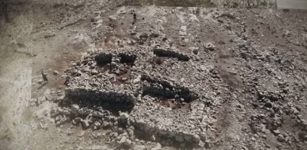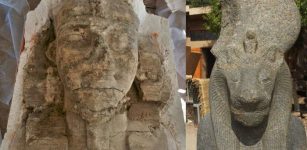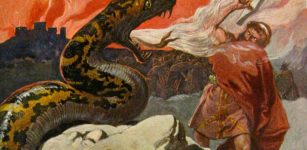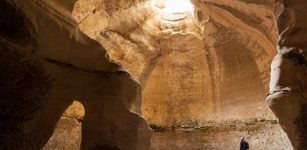Teotihuacan’s Puzzling Red Glyphs Could Be Unknown Ancient Writing
Jan Bartek – MessageToEagle.com – The city of Teotihuacán in Mexico remains as intriguing as mysterious. There is still so much we do not know about Teotihuacán, a city where we find some of the most significant Mesoamerican pyramids built in the pre-Columbian Americas.
During its epoch, Teotihuacán was inhabited by at least 200,000 people, but who were the city’s founders? The early history of Teotihuacan is quite mysterious, and the origin of its founders is uncertain.
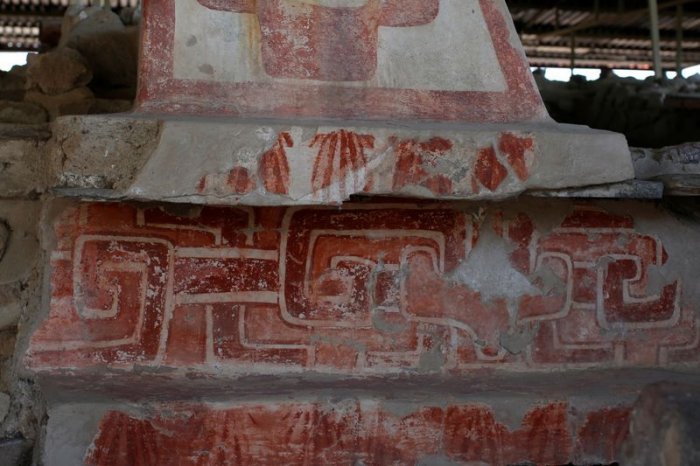
The remains of mural paintings with geometric designs and seashells are seen on the walls of La Ventilla, one of the most extensively-excavated neighborhoods in the ancient ruins of Teotihuacan, in San Juan Teotihuacan. Credit: Reuters
As mentioned in another article on Ancient Pages, Teotihuacán is “an ancient site where the circumstances of its destruction are not entirely clear. The people who created it are completely unknown, and no satisfactory explanation has ever been found for what appears to have been the sudden decline of the city.
There is no good reason to suggest a foreign invasion.
The city was destroyed through burning and deliberate destruction, and it must have been sacked. It happened in the middle of the 6th century CE”.
When the Aztecs and the Toltecs, reached a place called Teotihuacan it was already enshrined in myth. In Nahuatl, the Aztec language is still spoken in many parts of Mexico, Teotihuacan means “the place where men become gods.”
According to Clemency Coggins, a professor emerita of archaeology and art history at Boston University, the ancient city was designed as a physical manifestation of its founders’ creation myth. Not only was Teotihuacán laid out in a measured rectangular grid, but the pattern was oriented to the movement of the sun, which was born there, Coggins pointed out.
It has been suggested that the Pyramid of the Moon and avenue of the dead could be foundation for urban design of Teotihuacán.
Archaeologists keep making amazing discoveries in and around Teotihuacán. Below Teotihuacán there are many secret underground tunnels that can provide us with important information about the Maya people.
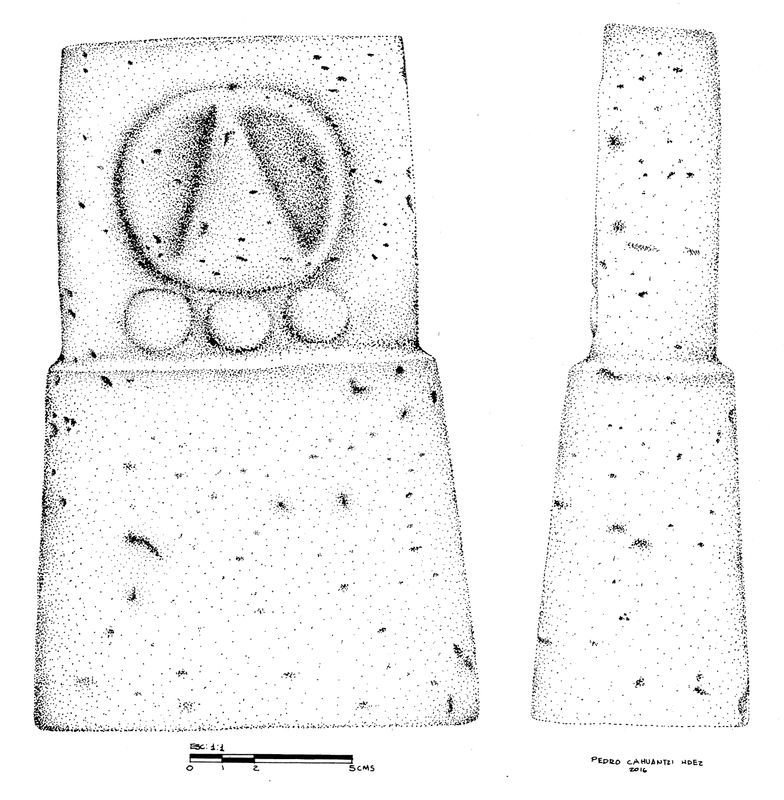
The ancient history of Teotihuacán is a brutal and cruel one, but the city never disappoints archaeologists. There is always something new here. There are also long-standing mysteries that remain unsolved such a number of curious glyphs.
In the 1990s, scientists investigating Teotihuacán came across a number of puzzling red glyphs, most laid out in neat columns. What was the meaning of the glyphs? The glyphs were considered an interesting discovery because most scientists believed people living in Teotihuacán were unfamiliar with writing. Could the red glyphs offer a different version of historical events?
Experts have debated several theories for the glyphs. Some scholars proposed the glyphs were symbols used to teach writing, or place-names of subjugated tribute-paying cities, or even as signs used in disease-curing rituals.
Art historian Tatiana Valdez who published a book about the glyphs of Teotihuacan, says the patio’s 42 glyphs, many in linear sequences, amount to the longest text ever found at the city’s ruins.
Overall, she says more than 300 Teotihuacano hieroglyphics have been tentatively identified so far.
Countless ancient Mexican codices – accordion-style folded paper books covered in hieroglyphics – were ordered burned in colonial times by Catholic authorities. Only about a dozen still exist.
According to U.S. News, Valdez is convinced such books were also part of Teotihuacan’s literary tradition, over a millennium before the bonfires.
“I think Teotihuacan used hieroglyphics, and used them well because we’ve found so many,” she said, pointing to thousands of mostly clay figurines with painted or incised glyphs that have been found on the site.
Valdez points out that archaeologists have unearthed many figurines found with glyphs on tiny headdresses or on their foreheads. Such artifacts could be evidence commoners were familiar with some kind of writing.

City of Teotihuacán in Mexico. Credit: Public Domain
Drawings and photos of the city’s most recently confirmed glyph are set to be published in a scholarly paper next year. Found in 2016 on the back of a miniature stone altar, it features a triangle in a round cartouche with three dots underneath. The single glyph likely represents the specific year it was dedicated.
It is the kind of find expected by Joyce Marcus, an archeologist at the University of Michigan who has argued that writing was absent in the city.
“So far, we have not seen the long texts,” she wrote in an email.
“Writing is rare at Teotihuacan when its ‘texts’ are compared/contrasted with those at Maya sites,” she added, pointing to the Mayan city of Tikal, a contemporary of Teotihuacan in present-day Guatemala. Tikal is home to monuments with columns of glyphs that in recent decades have been largely deciphered.
A painted mural uncovered in the 1960s in Teotihuacan shows what appears to be a priest holding a book. It was a “hugely important” discovery, said Christophe Helmke, a leading scholar of the city’s writing system at the University of Copenhagen.
He cautioned against expecting texts on public monuments or sculptures in the city, and said writing in Teotihuacan was probably mostly confined to its books.
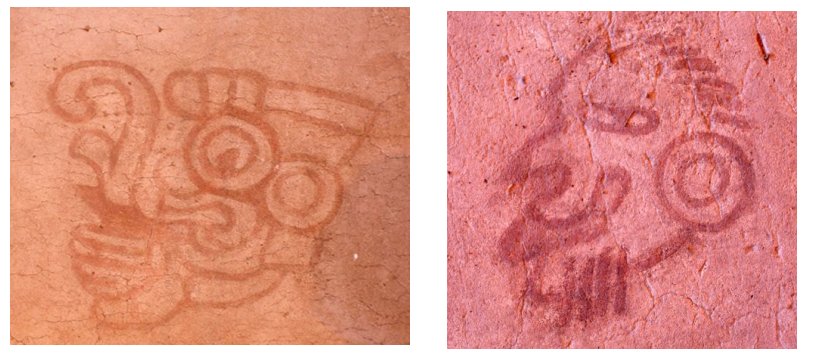
Can scientists finally unravel the mystery of writing in the ancient Mexican city Teotihuacan? Credit: Reuters
He suggested future advances will likely come from new mural or ceramic finds, but not books, which are unlikely to turn up due to the speed of deterioration of the paper or animal skins used by ancient scribes.
David Stuart, a University of Texas archeologist and epigrapher who has pioneered the decipherment of ancient Maya writing, said the lack of knowledge about what language was spoken at Teotihuacan complicates efforts to read its glyphs.
“It’s true that many still say that Teotihuacan had no writing system,” he said.
“But in fact it’s there.”
Written by Jan Bartek – MessageToEagle.com – AncientPages.com Staff Writer




